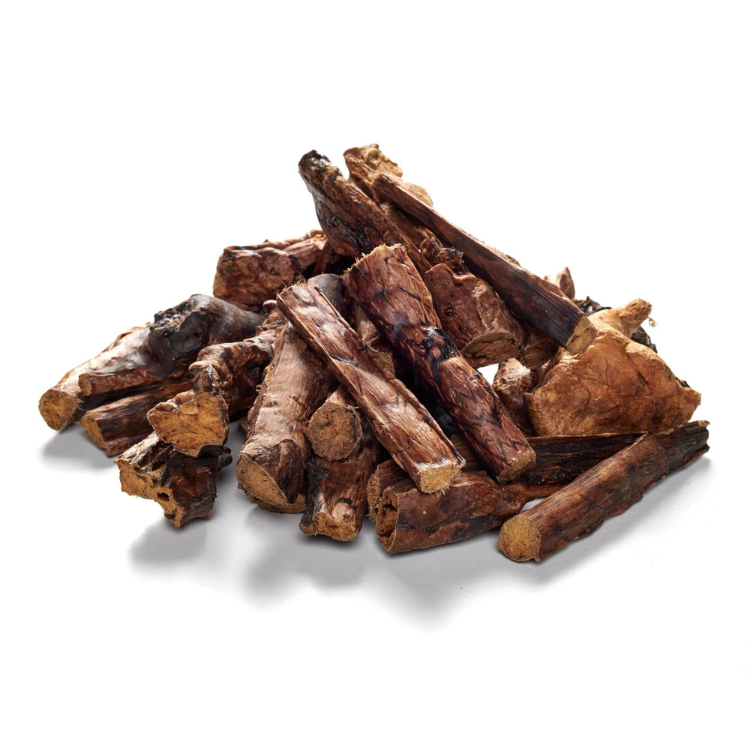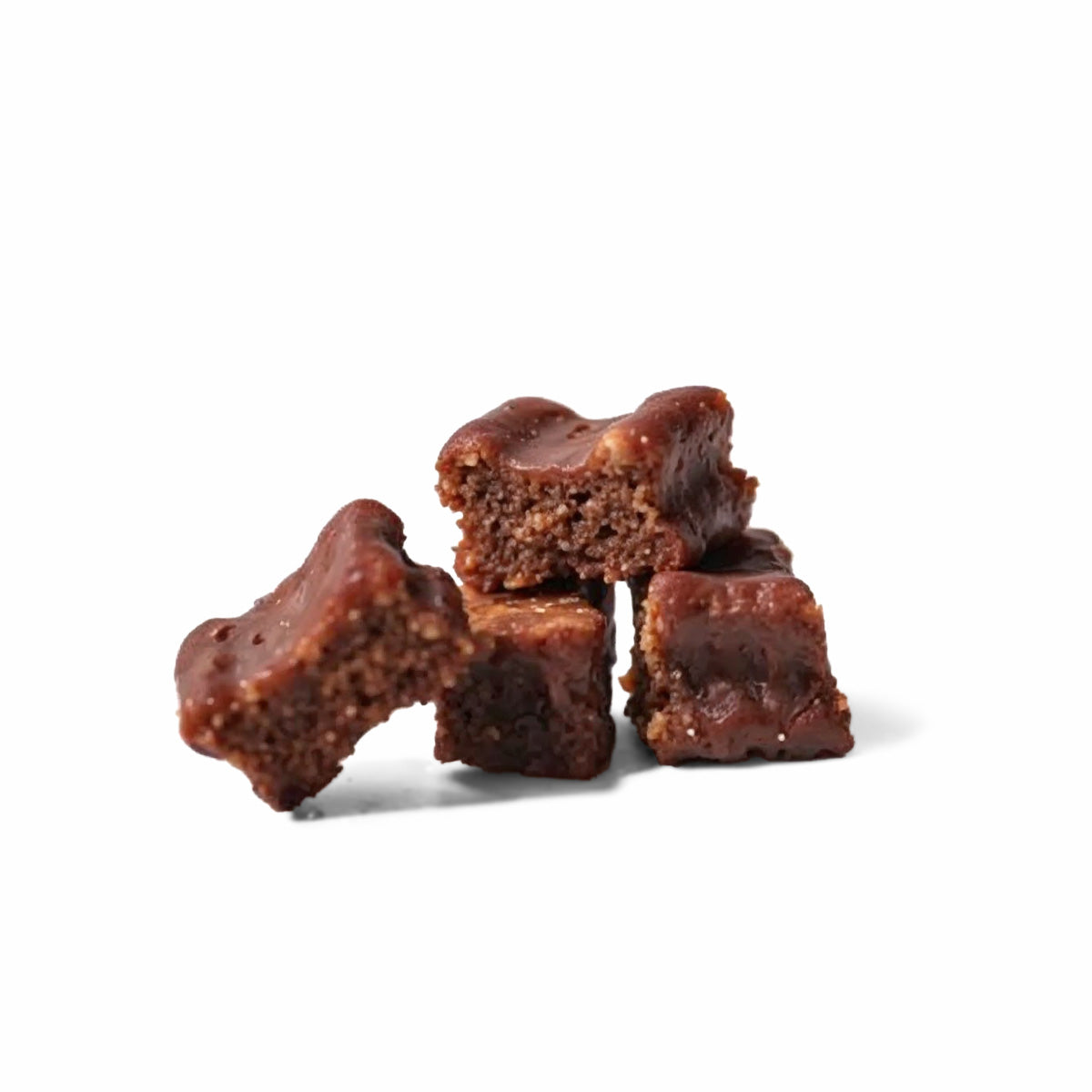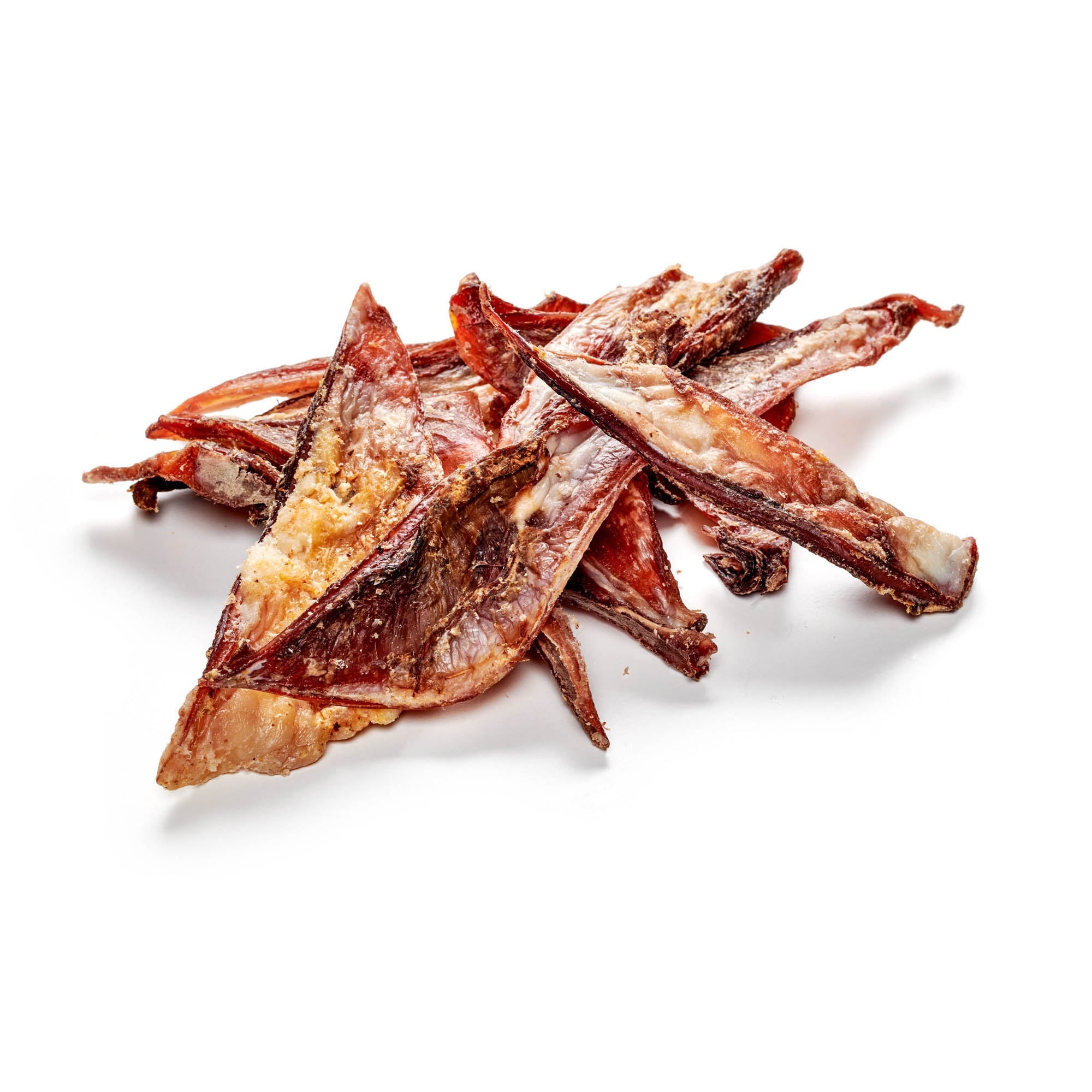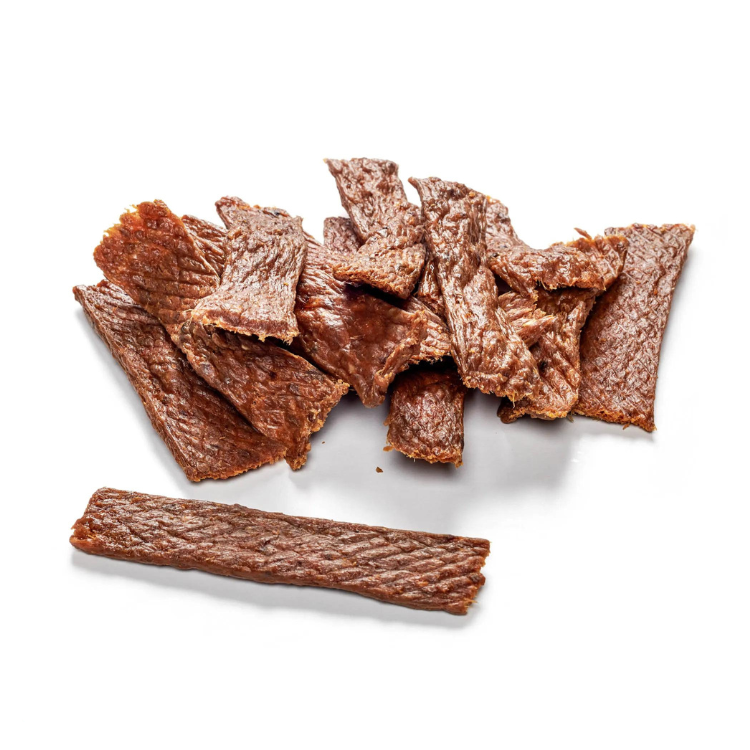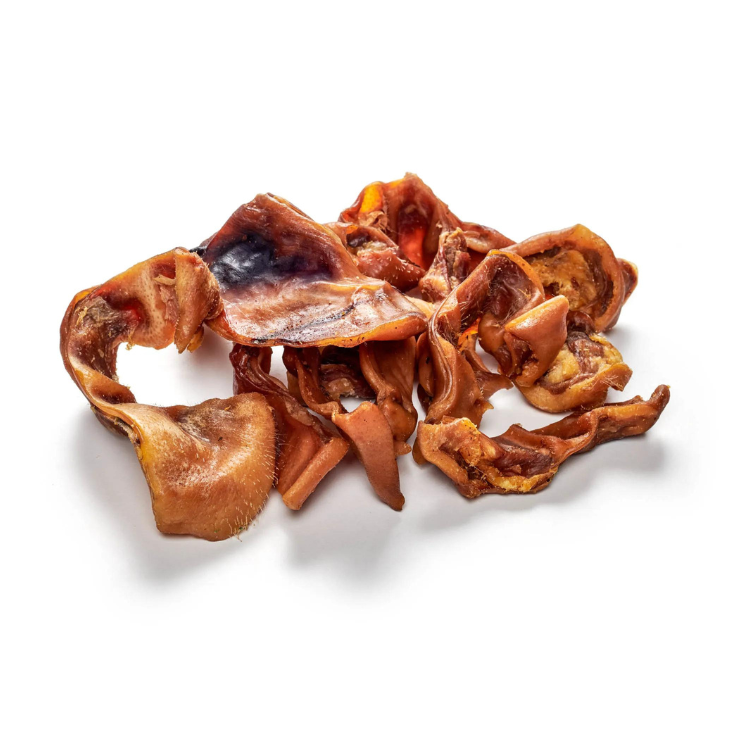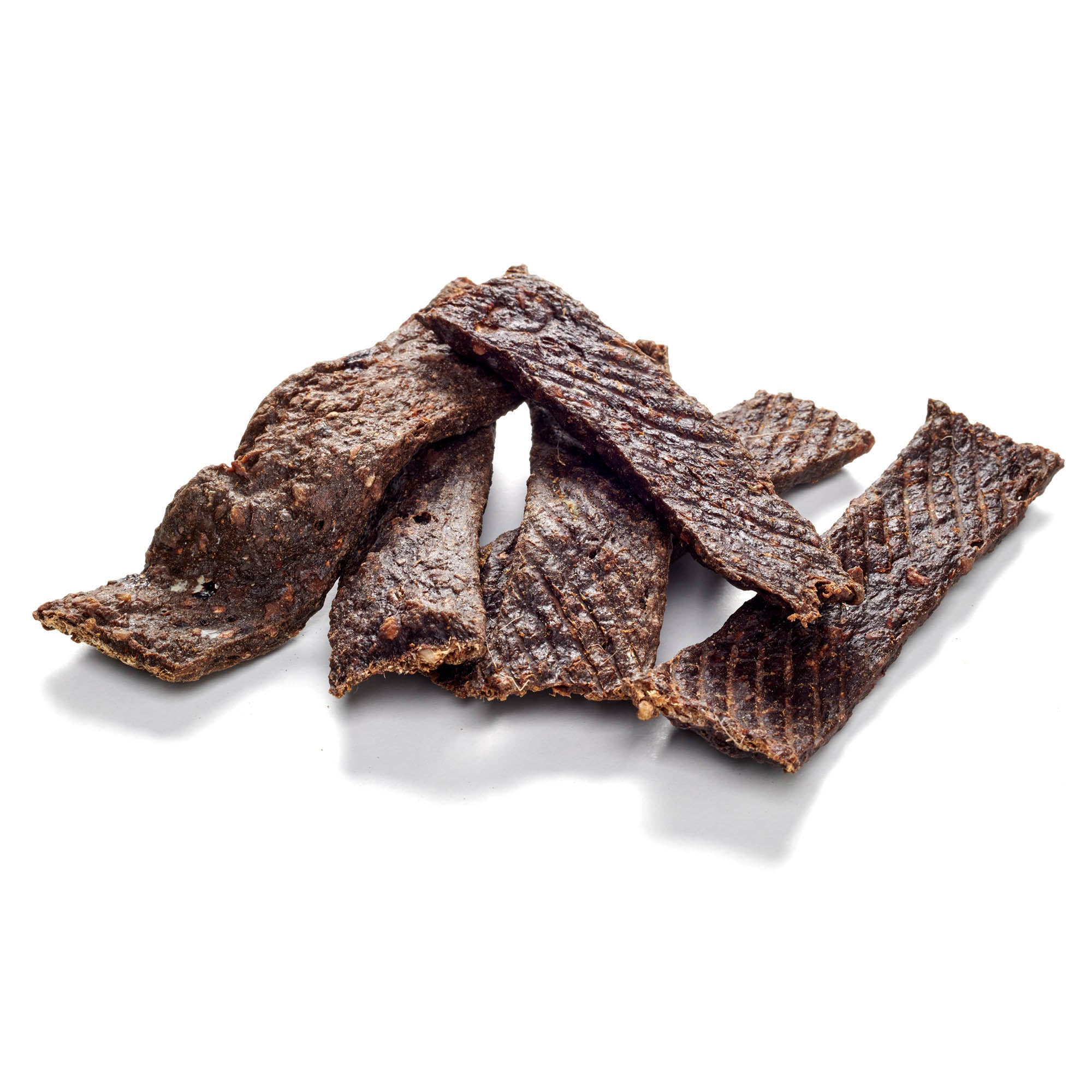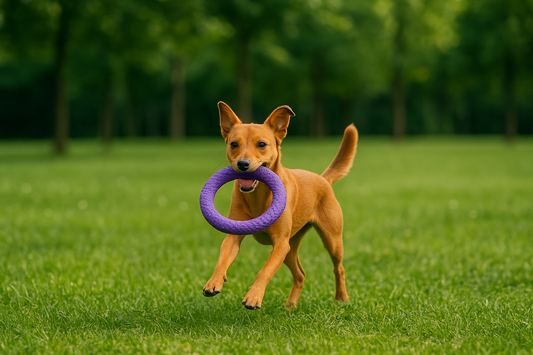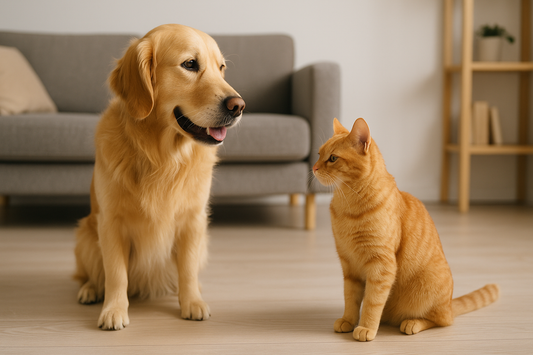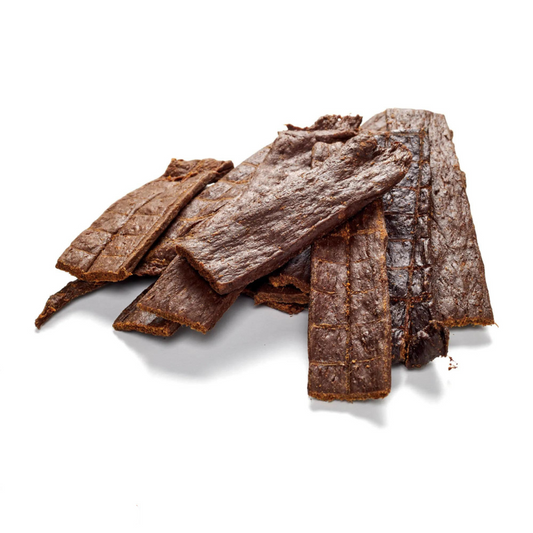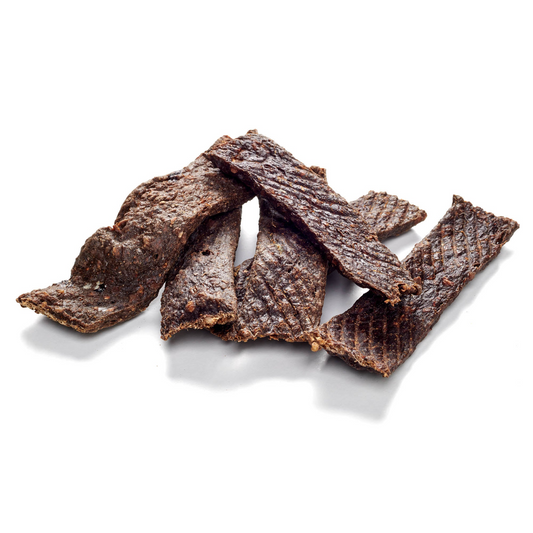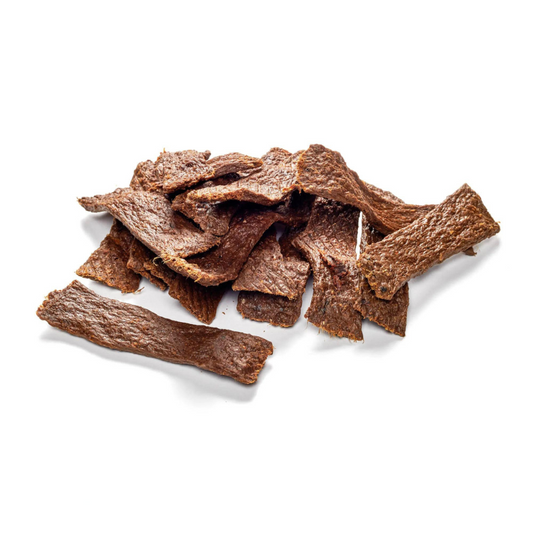
Leash guidance - How do I get my dog used to the leash
Share
A world full of scents, sounds and movements - that's what a walk is for dogs. They explore their surroundings with eager curiosity, always ready to experience the next adventure. But in the middle of this exciting journey of discovery there is a small but crucial detail: the leash. This seemingly simple piece of fabric or leather is much more than just a tool. It is the (in)visible bond that connects dog and human and leads them through the world together.
Content: Leash guidance - How do I get my dog used to the leash
- The first contact with the leash
- The first steps on the leash
- Dealing with Resistance
- From Training to Routine
- Things to avoid with the leash
- Conclusion
However, the path to perfect leash handling is an art in itself. It is a fine line of trust, patience and understanding, where the leash should not be seen as a means of coercion, but as a companion. A dog that respects the leash not only shows obedience, but lives in harmony with its human partner - a harmony that makes every encounter with the world out there a better experience.
Pamper your dog with our chew products!
The first contact with the leash
For many dogs, the first contact with the leash is a life-changing experience. This encounter can trigger curiosity, but also insecurity. It is therefore important to integrate the leash into the dog's life as something normal and positive right from the start.
Playful approach
The leash should not only be used when you go outside. Rather, it can play a role in the house or garden. Put the leash on when the dog is in a familiar environment, whether playing, cuddling or eating. This way, the leash becomes a constant companion that does not evoke negative associations.
A simple way to anchor the leash in a positive way is to associate it with pleasant experiences. Are there special snacks that your dog loves? Then offer them to him while the leash is loosely attached. This little trick ensures that the leash soon creates positive expectations.
The first steps on the leash
Once the leash has been integrated into everyday life, the next step is walking on a leash. This phase can be challenging because the dog now has to learn to move within a certain framework.
Practice easy walking
Start in a quiet environment where there are few distractions so that the dog can concentrate fully on you and the training. Keep the leash loose so that the dog has the freedom to move at his own pace without feeling constrained. If the dog starts to pull on the leash, i.e. wants to move forward faster than the leash allows, simply stop. At this moment the dog will realize that pulling will not get him to his goal - on the contrary, it will stop his progress.
The walk only continues when the dog releases the tension on the leash and the leash becomes loose again. This method naturally teaches the dog that he can only make progress if the leash is relaxed. It is a silent communication that teaches the dog that the walk together will only go smoothly if he goes at your pace.
Another technique that is particularly effective when the dog changes direction or pulls hard is the change of direction. If the dog changes direction on its own or pulls too hard, simply turn around and go in the opposite direction. This sudden change of direction throws the dog off balance with its own planning and makes it more attentive to your movements.
This teaches him that he has to concentrate more on you in order not to lose touch. This exercise trains the dog to follow your movements attentively and gradually understands that moving forward in a relaxed manner and together is only possible if he follows you and not the other way around.
The right time for rewards
The timing of the reward is crucial to teaching the dog how to behave correctly on the leash. When the dog walks next to you without pulling, it is important to praise him immediately and occasionally reward him with a small, tasty treat. Especially in the early stages of training, this regular reward helps to strengthen the connection between the relaxed walking and the positive reinforcement.
However, once the dog has understood what is expected of him, it is important to gradually reduce the frequency of rewards. Instead of giving the dog a training snack every time, you can reward the dog variably - that is, sometimes he gets a piece of dog sausage , sometimes just praise or a short game. This way the behavior remains stable without the dog expecting to be constantly rewarded.
Another effective method to motivate your dog without constant treats is clicker training . The clicking sound allows you to give your dog a positive signal that he has done something right without having to feed him every time. This allows you to reinforce the desired behavior without overloading it with a physical reward.
The goal is for the dog to learn that the pleasant experience of walking on a leash is worthwhile in itself. Ultimately, rewards should be more sporadic and unexpected in order to reinforce the behavior in the long term and show the dog that it is worth remaining attentive and obedient even without constant rewards.
Delicious chews for your faithful companion now available!
Dealing with Resistance
Not every dog accepts the leash right from the start. Some react by standing still, biting or even refusing completely. Such reactions are not abnormal and can be overcome with the right approach.
The standstill
If a dog stops and refuses to move on, patience is required. Instead of pulling or tugging, it can help to take a step back and encourage the dog to follow you. A simple trick is to put a treat on the ground or use a toy that encourages the dog to move. The important thing is to stay calm and not apply pressure - the dog should move on of its own free will.
biting the leash
Leash biting is a common problem, especially with young dogs. They often see the leash as a toy or react to it out of frustration. A good way to stop biting is to offer the dog an alternative, such as his favorite toy . This way he learns to direct his energy towards something else. It is important to consistently ignore the dog biting the leash. Any kind of reaction, be it attention or reprimand, can unintentionally reinforce the behavior. Instead, calm behavior should be rewarded so that the dog notices that walking calmly on the leash is perceived positively.>Another problem can arise when the dog is left alone on a leash - some dogs will try to free themselves by biting the leash. So always keep this in mind when you put your four-legged friend on a leash outside the store so you can go shopping, and it's best not to leave him alone for too long. This is where bite-resistant dog leashes can be a wise investment, especially for dogs who tend to chew. These leashes are made of sturdy materials that can better withstand chewing and reduce the risk of the dog breaking free from its leash.
From Training to Routine
Once the initial difficulties have been overcome, the actual training can begin to make walking on a leash a routine. It is now a matter of establishing the leash as a part of everyday life and leading the dog in such a way that walks are pleasant for both parties.
regularity and consistency
Regular, short training sessions are more effective than long, irregular ones. Daily walks during which leash walking is consistently practiced ensure that the dog internalizes what it has learned. At the same time, the exercises should be varied to avoid boredom and to constantly challenge the dog.
The leash as a means of communication
The leash is not only used for physical connection, but also for communication. A gentle pull or a slight yielding can signal to the dog what should happen next. It is equally important to use your own body language consciously. A confident, calm walk gives the dog the feeling that it is in good hands. Insecure or hectic behavior, on the other hand, is quickly transmitted to the dog and can lead to confusion or stress.
Things to Avoid with the Leash
The leash is a valuable tool in dog training, but there are some mistakes that should be avoided at all costs. These mistakes can not only make training more difficult, but also put a strain on the relationship between dog and owner.
- Pulling or jerking on the leash: One of the most common mistakes is to pull on the end of the leash or jerk it when the dog does not obey. This can not only cause physical damage, but also shake the dog's confidence. Instead, you should react calmly and in a controlled manner, for example by stopping or changing direction, to signal to the dog that his behavior is not achieving the desired goal.
- Using the leash as punishment: The leash should never be used as a means of punishment. If the dog is hit or pulled around with the leash, he will quickly associate it with negative experiences. This can lead to fear or aggression towards the leash, which makes it much more difficult to walk on the leash.
- Too much tension on the leash: A permanently taut leash signals to the dog that he is in permanent conflict with the owner. This can cause stress and frustration in the dog. The leash should always be kept loose to give the dog a feeling of freedom and trust while he learns to orient himself at your pace.
- Using the leash as a toy: It can be tempting to use the leash as a toy to keep your dog occupied, but this can lead to undesirable behavior, such as biting the leash. It is better to use special toys and use the leash exclusively for walking and training.
- Leashing the dog for too long: A dog should not be left unattended on a leash for long periods of time. This can lead to boredom, frustration and, in the worst case, injuries, especially if the dog tries to free itself. If the dog has to be leashed somewhere for a short time, the duration should be kept as short as possible and the situation should always be kept under control.
By avoiding these mistakes, you promote positive and effective leash handling, which brings more joy and safety to both the dog and the owner when walking together.
Conclusion
Leash training is a fundamental aspect of dog training that goes far beyond just walking. It forms the basis for a trusting and harmonious relationship and is an important step on the way to a close bond between dog and owner. With patience, positive reinforcement and the right amount of consistency, the leash goes from being a necessary tool to a symbol of connection and trust. As soon as leash training is established, new opportunities for shared experiences and adventures open up - be it in the city, in the country or in the forest. Because at the end of the day, the leash is not just a piece of fabric, but the bond that holds dog and owner together.
Dog chews available for happy and satisfied four-legged friends!


